Philodendrons are taking over the world of indoor gardening, and we love to see it. Famous for their striking foliage, these native tropical forest dwellers have climbed, crept, and crawled their way into the hearts of home gardeners all over the world. Because they’re so easy to care for, they are a huge hit among beginner and expert gardeners alike. In this article, let’s take a closer look at rare philodendron varieties.
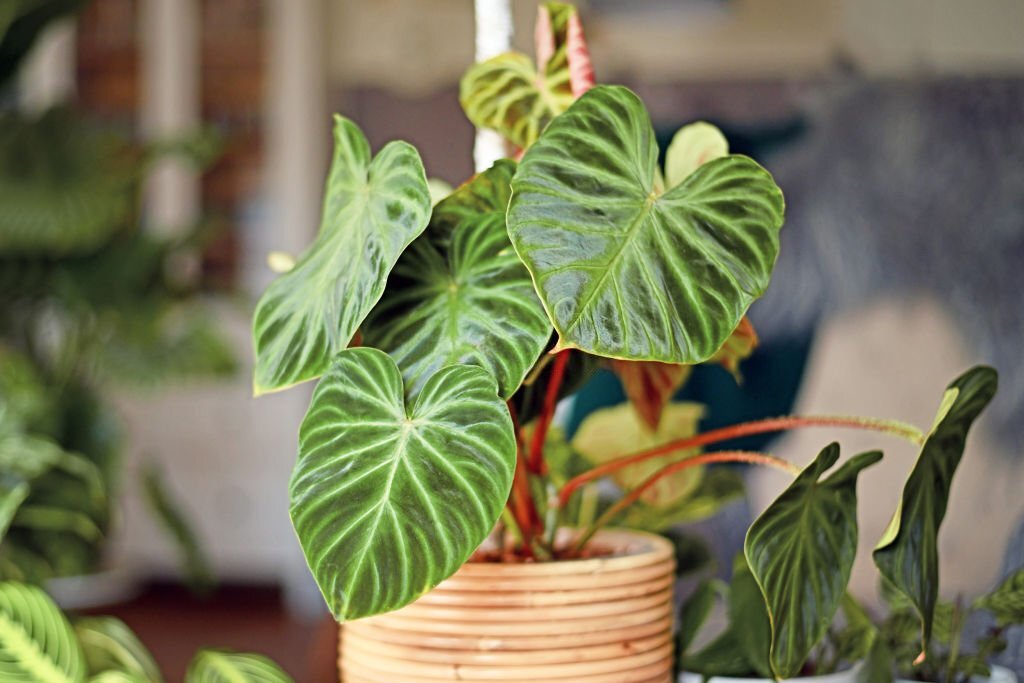
There are so many varieties that it is impossible not to find one that fits your home or garden aesthetics. The Philodendron genus consists of more than 3000 species and varieties.
However, not all these species can be picked up at your local nursery for a nominal price. If you come across a variety that you want to add to your collection but can’t find anywhere, chances are that it is one of the rare philodendrons, a select few that are extremely difficult to purchase, if one manages to locate them in the first place.
These rare philodendrons are difficult to find for several reasons, and when they are, they can be shockingly expensive. These special plants may be collectors’ items, but that does not stop us, regular gardeners, from learning about them.
In this article, we’ll learn about some of the most unique and exclusive philodendron varieties, why they are so expensive and hard to find, and the best conditions to raise them in if you’re planning on adding one of them to your collection.
A Little About Philodendrons
Before diving into the exclusive world of rare philodendrons, let’s learn about the genus Philodendron. After all, rare philodendrons are still philodendrons; they share a lot in common with the ones we can easily find around us.
The philodendron genus belongs to the family Araceae, whose members are known as Aroids. This makes them close cousins with other beloved houseplants like monsteras, anthuriums, and pothos. You can identify them by their unique flowers made up of a spear-like ‘spadix’ in a leaf-shaped sheath called a spathe.
Philodendrons’ biggest claim to fame is their beautiful leaves that can melt the heart of any plant lover. Their lovely foliage comes in a wide range of textures, shapes, and colors.
They can be glossy or leathery, with ridges and varying thicknesses. Heart shapes, circles, spears, serrations, and lobes, on narrow, broad, or palm-like leaves can all be found on philodendrons, depending on the species.
Forest plants are well-known for their rich, dark green color, but philodendron leaves may also carry bright splashes of white, yellow, pink, lime, gray/silver, and wine-red that add cheer to any indoor space. Many species also have colored stems with tiny spikes. Some philodendrons may even be aromatic, like the Philodendron tripartitum species.
They are also loved for their form or growth habit. Most philodendrons are tree climbers and creepers in their natural habitat. With this habit, they make an interesting addition to home gardens and office spaces. Non-vining philodendrons present their impressive leaves in shrub-like clusters.
Philodendron Care
In general, philodendrons are low-maintenance houseplants. As long as you place them in a position where they receive optimal light and humidity, most philodendron species may not need any more attention than light watering once a week.
As forest natives, philodendrons are used to being shaded by a canopy of tall trees, so they do not do well when exposed to direct sunlight. You may find your leaves turning black if you plant them outside, which is one of the reasons why philodendrons are perfect for indoor gardening.
Most species do love bright indirect light. Growing them close to a south-facing window or under artificial grow lights will add vibrancy to their colors and patterns.
Many philodendrons contain compounds that can be poisonous to humans and pests if eaten, so it’s best to place them out of the reach of your small children or furry friends. But they also help purify the air around them by removing toxic compounds like formaldehyde from the atmosphere.
Philodendrons like moist soil but can get root rot in soggy environments. Watering every 7-10 days is enough for most species.
Because Philodendrons originate from the tropics where average humidity levels are around 77-88%, dry air slows their growth and causes dull, limp foliage. However, keeping the indoor humidity around 50-60% with a humidifier is enough to grow robust plants.
Some species also appreciate cleaning their leaves of dust every once in a while. This will allow them to exchange moisture more freely with their environment.
Why are rare philodendrons rare (and expensive)?
Philodendrons may be unavailable around you for one of the following reasons
- Distribution difficulties: Some species only grow in certain countries, states, or regions of the tropical rainforest. Because it is so difficult to reach them, it is hard to make them available to the rest of the world, making them rare on the houseplant market. This is less of a problem nowadays due to modern propagation methods.
- Sparse growth: Perhaps because of difficulties in reproduction, some species grow very scarcely even in their natural habitat. The population of some of these species is made up of only a few individual plants, so they are considered endangered. These types of plants are bred in special labs to conserve them and prevent them from going extinct.
- Demand: Because there are so many people who want to own these exclusive plants, breeders can’t keep up. They end up selling to those who can pay the highest, increasing the worth of these houseplants past what regular gardeners can afford.
Related: Yellow? Goodbye! 7 Reasons Why Your Philodendron Is Changing Color
Rare Philodendrons List
Let’s dive into the world of some of the most luxurious and coveted philodendrons. Many of these species are endangered so it’s important to keep them healthy if they ever come into our care.
1. Pink Princess
Scientific name: Philodendron erubescens ‘pink princess’
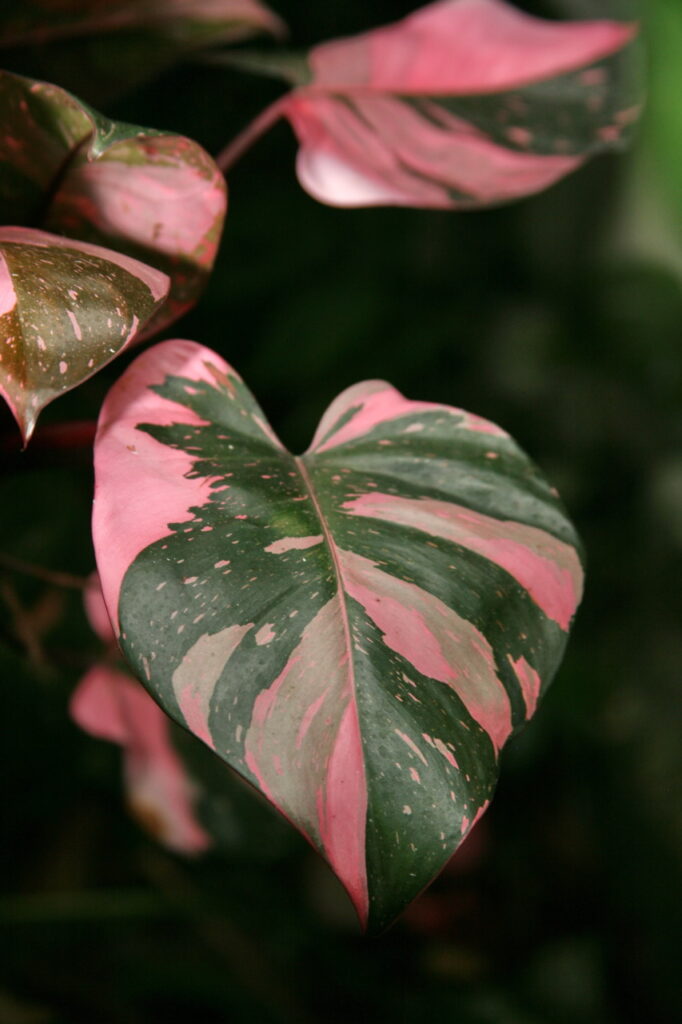
Perhaps the most famous of the rare philodendrons, this climbing aroid is a true beauty to behold. At its best, the Philodendron Pink Princess has velvety dark green leaves with streaks and splotches of blush pink, each leaf sporting a different pattern of pink.
The pink princess is a hybrid, derived from the original Philodendron erubescens i.e. the ‘Red Emerald’, which is red on its underside.
It was created in the 1970s, though there isn’t much information on exactly how it came about. Like its parent plant, its stems are a rich burgundy color.
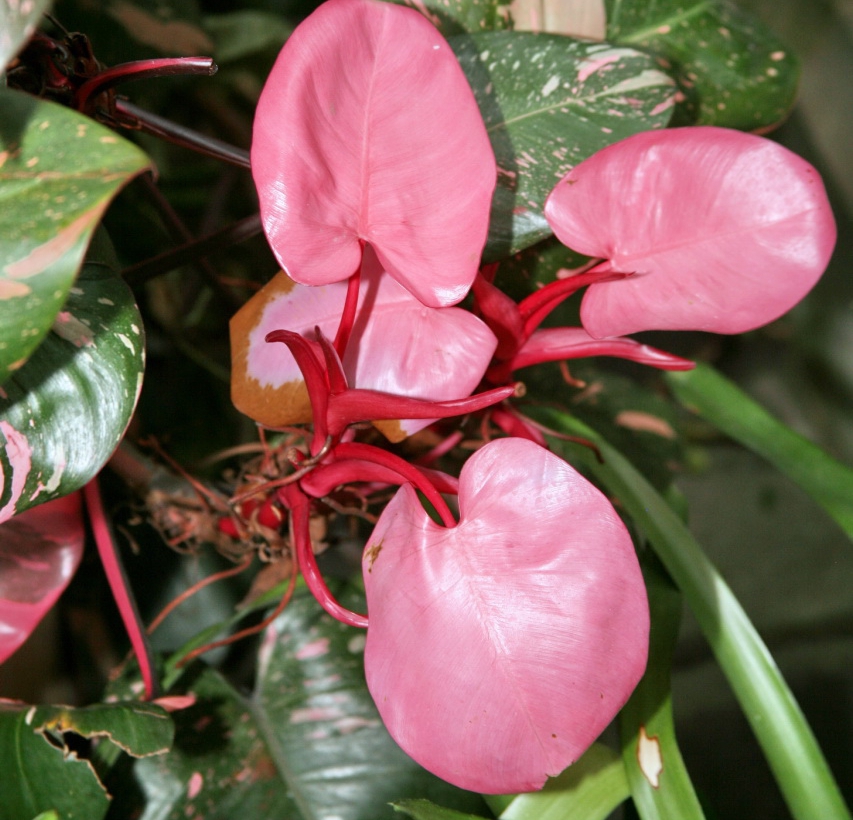
The Pink Princess is one of the most sought-after philodendrons for its stunning foliage and this is part of the reason why it’s so hard to buy.
These beauties, unfortunately, take a long time to develop into seedlings and may not always come out with a high percentage of pink, so when breeders get a good one, they need to sell it at a high price to prevent losses. It is immediately snatched up anyway by buyers all over the world.
While it does grow rather slowly, the pink princess is as easy to care for as other philodendrons. The only factor to pay attention to is the lighting, as long as the soil is neither too wet nor too dry.
They need to get as much bright indirect light as possible since they have less chlorophyll per leaf than non-variegated plants.
You can encourage faster growth by increasing the humidity levels in the room where your pink princess is kept, and feeding them with fertilizer in the spring and summer months when philodendrons tend to grow the fastest. In the right conditions, you’ll find your pink princess growing into an elegant, stunning vine.
2. Philodendron Rugosum (Pigskin Philodendron)
Scientific name: Philodendron rugosum
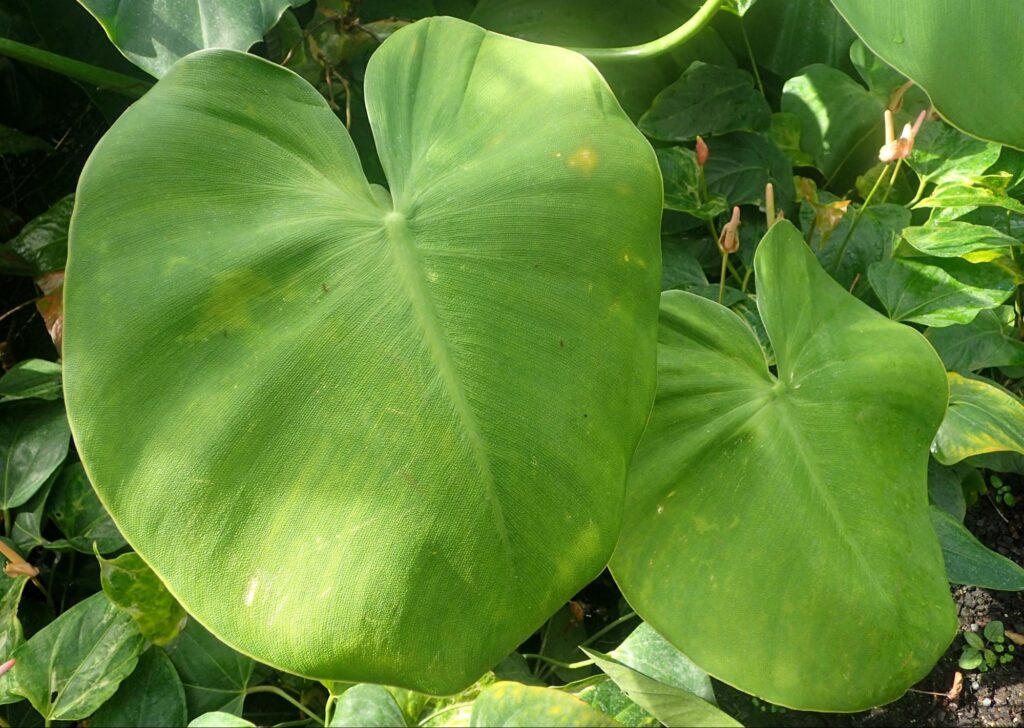
Philodendron rugosum is known for the unique texture of its leaves, hence the nickname pigskin philodendron. They are thick and leathery and they wrinkle up in a way that reminds one of pigs’ ears. The name rugosum comes from the Italian word “ruga” which means wrinkled.
Rugosums are climbing plants whose interesting leaves get larger as they climb higher. Mature rugosums have broad, thick, bright green leaves that are great for adding a tropical air to any space.
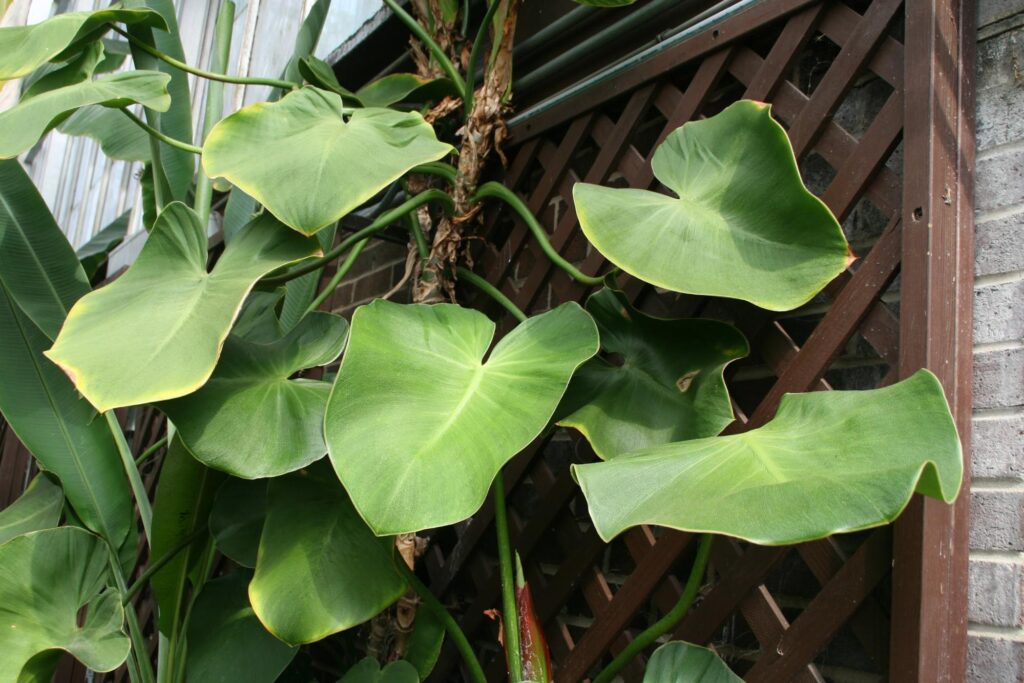
These beautiful plants are unfortunately endangered by the threat to their natural habitat. This makes them scarce in the gardening market, so if you’re lucky enough to own a rugosum, you have a great responsibility to help it flourish.
The best way to achieve this is by replicating the natural conditions rugosums are used to as much as possible. Like most philodendrons, rugosums thrive in dappled, indirect light and will burn under direct sunlight.
As with all philodendrons, more humidity means better-looking leaves, but rugosums are tolerant to low humidity levels. They dislike for their soil to dry out, so it is important to find the right balance between moist soil and overwatering. They’ll thrive both indoors and outdoors if the right conditions are met.
3. Silver sword
Scientific name: Philodendron hastatum
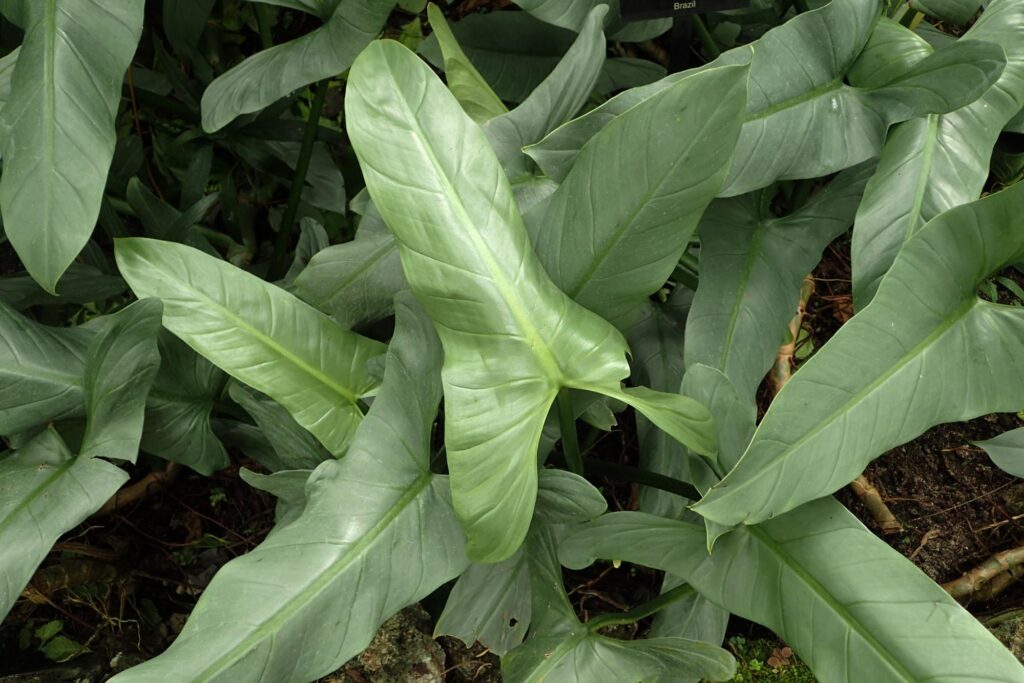
Another in-demand but rare houseplant, philodendron hastatum has one of the most unique kinds of color variegation among philodendrons. Caused by a layer of air pockets below the epidermis, reflective or blister variegation gives hastatum a silvery, metallic sheen that earns it the nickname ‘silver sword’.
The silver sword has elongated heart-shaped leaves that do resemble a sword. They may even glint in the sunlight at the right angle!
The threat to its natural habitat in the tropical rainforests of South America, coupled with its high and rising demand worldwide is the reason for its scarcity. It is one of many philodendrons that are officially considered endangered species.
Unlike the pink princess, hastatum is a fast-growing species. On its own, it can grow up to 3 feet, with leaves that are 9 inches long. But giving your plant a moss pole to climb brings out the best of its showy value.
Hastatums are one of the hardier philodendrons and will grow well in a range of conditions, as long as the temperature is kept above 15°C and humidity above 50%. They are more tolerant of overwatering than other philodendrons but that doesn’t mean they are not at risk of root rot.

They love bright indirect light but will do as well in low-light conditions. Avoid direct sunlight and you’ll have an exotic-looking vine with large, vibrant leaves in no time.
Related: Pothos Vs. Philodendron: How To Tell Between The Two Popular Houseplants?
4. Philodendron Tortum
Scientific name: Philodendron tortum
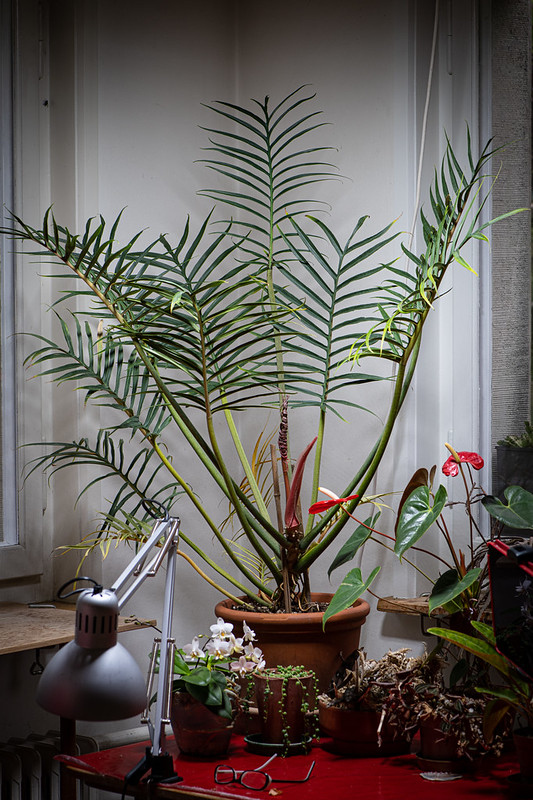
With palm-like leaves and a corkscrew growth habit, Tortums are unlike any other philodendrons. Its leaves, which may look like any other palm leaf with separate spiny blades extending from a central body, are, in truth singular heart-shaped leaves with deep lobes in between their veins, giving them an eerie skeletal vibe. They could have had us fooled, but they’re not related to true palms in any way.
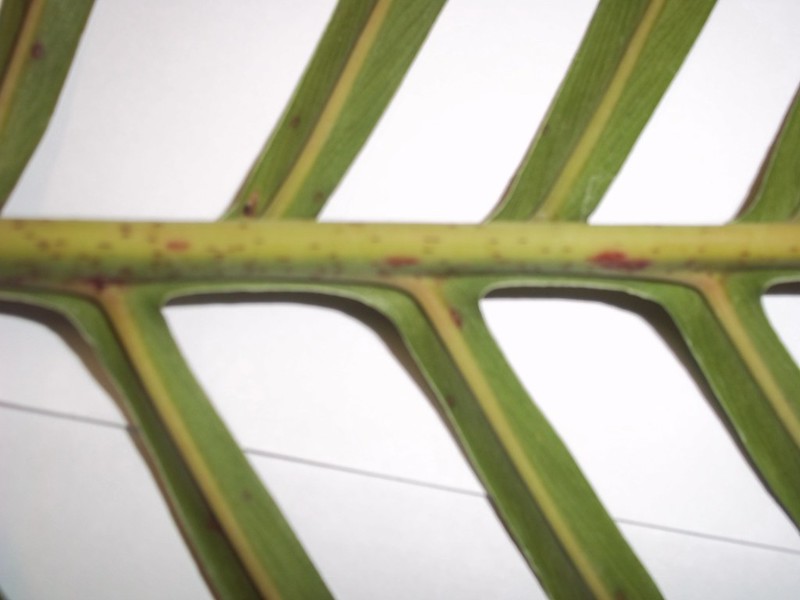
Philodendron tortum does not produce any kind of flower, but its magnificent form makes up for this.
In their natural habitat, Tortums are epiphytes that reach an average height of 6 meters at full maturity. In the garden, however, each plant grows differently, and the environment and care it receives will determine the final length each plant reaches.
Once you’ve heard of this unlikely philodendron, it is impossible not to want it in your collection. This means that, although it grows abundantly in the wild, high international demand makes philodendron tortum limited and exclusive in the gardening world.
Despite their market scarcity, Tortums are not fussy plants and will grow well in conditions favoring any other philodendron.
Like most philodendrons, they do not like the cold and prefer warm, moist environments. Give them a moss pole with lots of space to grow, and feed with a nitrogen-rich fertilizer once a month during the warm seasons for superb climbing plants.
5. Philodendron 69686
Scientific name: Philodendron 69686a

Any plant without a name is sure to catch your attention, right? It has definitely caught the attention of plant lovers all over the world. 69686 is now one of the most coveted philodendrons amongst rare plant collectors.
It’s eye-catching name comes from the fact that the origins of this special plant have not been identified, ever since it was discovered in 2005. 69686 is the classification number it received when it was first discovered.
Philodendron 69686 is very rare in the wild and the growing demand for it worldwide makes it one of the most expensive philodendrons out there. But it is its unique foliage, not its interesting name, that makes it such a celebrity among other philodendrons.
69686 leaves are smooth and velvety, with a three-lobed, hourglass shape. The leaves change in form as the plant climbs higher, with the hourglass ‘waist’ getting slimmer and slimmer until the three lobes look like separate leaves.
Because it is a hybrid, its leaves also look different from plant to plant, with some plants sporting bright yellow variegated spots.
Despite being a hybrid like the pink princess, 69686 has a fast growth cycle and can reach impressive sizes within a short period, especially when planted outdoors with support to climb. 69686 looks good whether it is left to trail or allowed to climb, but its interesting leaves are best displayed aerially.
Philodendron 69686 enjoys the same conditions as other philodendrons and may be hardier than most species.
However, when it is planted in pots special attention should be paid to its roots. Because of its fast growth rate, expanding root systems are susceptible to damage if constricted by the pot. 69686 plants outgrow their pots easily and should be repotted often to avoid early plant death.
6. Philodendron Joepii
Scientific name: Philodendron joepii

With an interesting name and an interesting backstory, and even still more interesting foliage, this philodendron is one for the records. Joepii is pronounced ‘yupe-E-eye’ and it comes from the name Joep Moonen, the name of the researcher who discovered the species in French Guiana.
Dr. Moonen found this oddly-shaped plant growing on a little hill and approached it without thinking much of it. He ended up falling into a giant anthill!
It is easy to think that this legend is the reason why philodendron joepii looks the way it does. It has a similar three-lobed shape to 69686, but with irregular, serrated edges that look like they’ve been bitten off by ants.
Researchers and gardeners alike adore this plant, but unfortunately, there isn’t enough in the world to go around. Not only is it rare in the wild, but Joepii is also very difficult to propagate in vitro. The sky-high demands on this intriguing plant also help make it one of the most expensive philodendrons you can buy today.
Part of the reason it is so popular is that we don’t know much about it. It is yet to be officially classified but according to Dr. Joep Moonen, it might be a hybrid of Philodendron bipennifolium and Philodendron pedatum.
Despite the lack of official information, you can successfully raise a Joepii plant by following a few simple guidelines. Firstly, do not expose your philodendron to cold and avoid fluctuating temperatures near your plant, as it is not frost hardy at all.
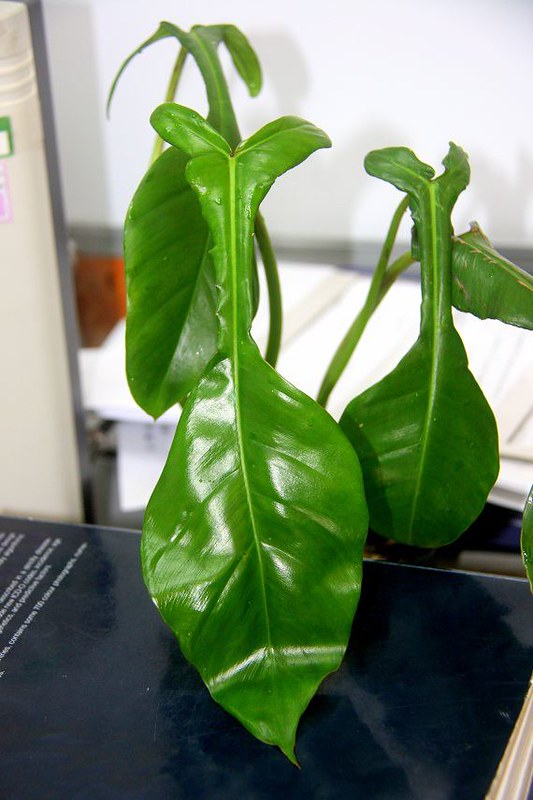
Secondly, you need to provide some form of support like a trellis pole or moss pole if you want to grow mature plants with large, lush-green leaves.
Joepii likes bright indirect light but will do well under medium lighting and it doesn’t like to get too dry before its next watering. Add a humidifier or two near your plant to grow real rainforest-quality philodendron Joepii.
7. Red Moon
Scientific name: Philodendron ‘Red Moon’
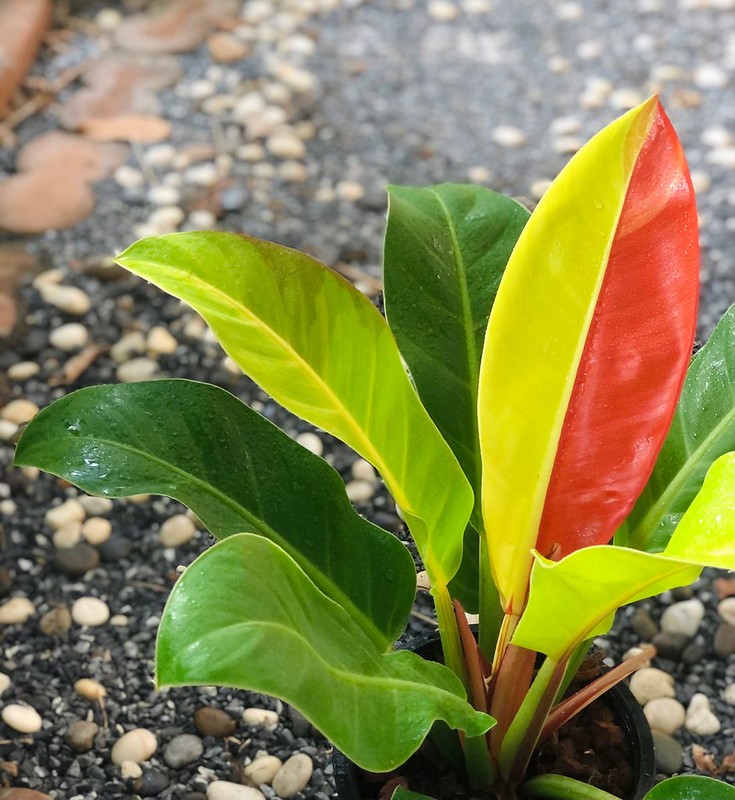
The red moon is an extremely rare philodendron variety that is cultivated almost exclusively by special, dedicated plant breeders. Its special beauty makes it one of the most beloved plants to rare plant collectors.
Red moon earns its nickname from the stunning red and yellow-patterned leaf that often looks like a half moon, which it sprouts once in a while. Though this special leaf is the star of the show, Red Moon’s brilliant pale lime foliage also makes an ethereal combination with its blood-red stems that is impossible to resist.
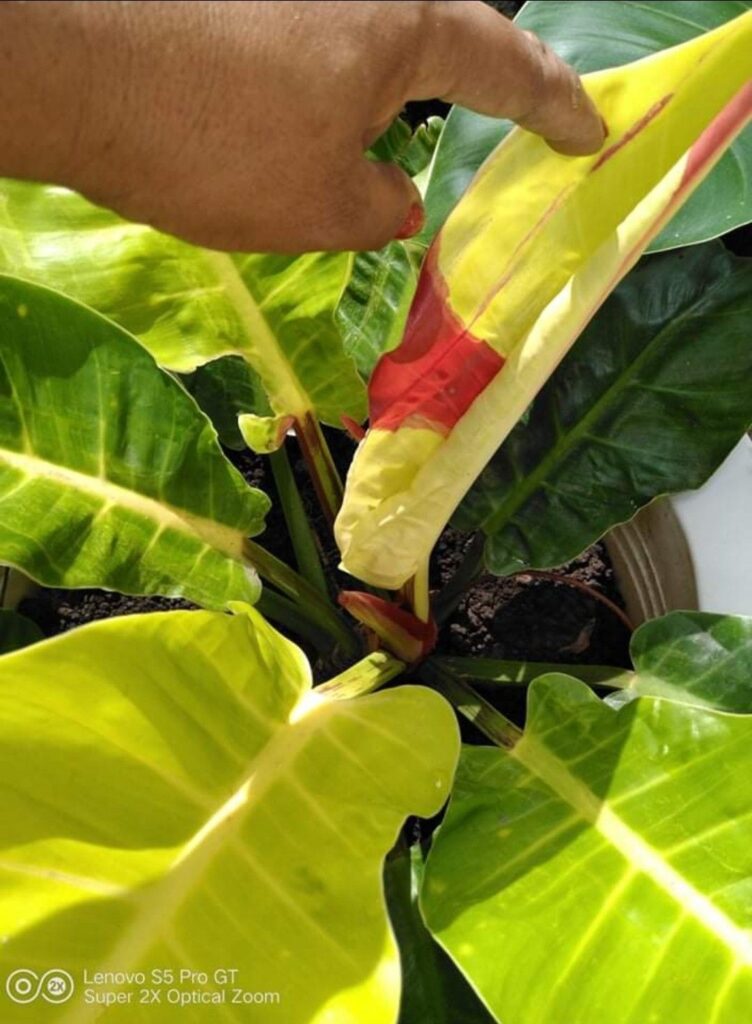
Anyone lucky enough to get their hands on one of these beautiful plants will want to know how to care for it.
Of course, the best way to do this is by replicating the natural environment it is from as accurately as possible. This means warm temperatures and high humidity levels, as well as well-draining soil that is high in organic matter as well as dappled or filtered sunshine.
Once these conditions are met, the Red Moon will perform well both outdoors and indoors, but keep in mind that it is highly sensitive to frost and will fall ill at the slightest sign of cold weather. Direct sunlight falling on the leaves can also cause irreversible damage to the plant.
8. Philodendron Mamei (Silver Cloud)
Scientific name: Philodendron mamei
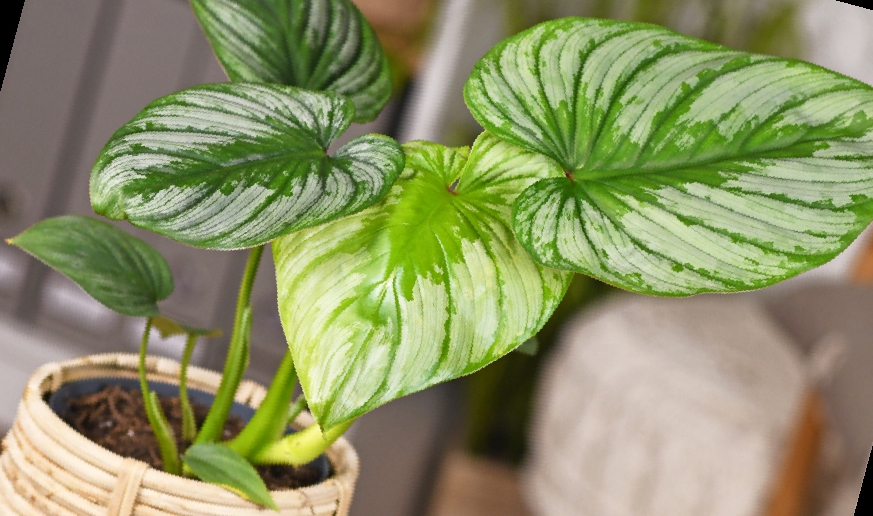
The second broad-leafed philodendron to make this list, philodendron mamei is a striking beauty with similar reflective variegation to that of the silver sword, which earns it the nickname ‘silver cloud philodendron’.
With cloud-like swathes of silver on a glossy, dark green background, sparkling in between their deep, ridge-like veins, mamei leaves make a bold, yet subtle statement that is difficult to resist.
Philodendron Mamei doesn’t grow abundantly in the wild, but it is easier to purchase nowadays, thanks to modern propagation techniques. Like the pink princess, this is one rare plant that you may not have much trouble adding to your garden.
But beauty isn’t always fussy, and Mamei plants are the definition of low maintenance. They are slow-growing plants, so they don’t need to be repotted often. Your Mamei will perform as well outdoors as they do in pots if direct sunlight and overwatering are avoided.
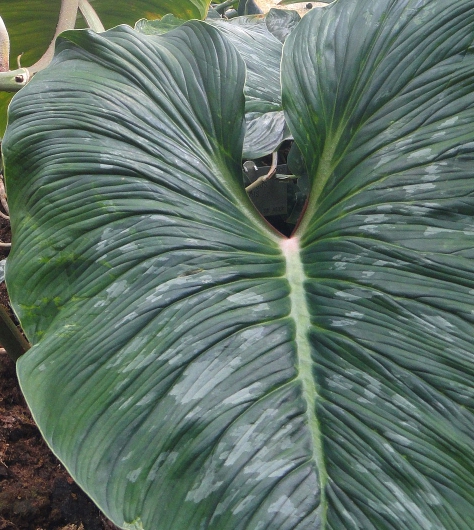
If you’re lucky enough to get your hands on one of these beauties, be sure to plant them in well-draining soil, but also water them as soon as the top 2 inches of the soil dry out. Fertilize your plants in the spring and summer months, and you’ll have steady, happy growth for years.
9. Spiritus Sancti
Scientific name: Philodendron spiritus sancti
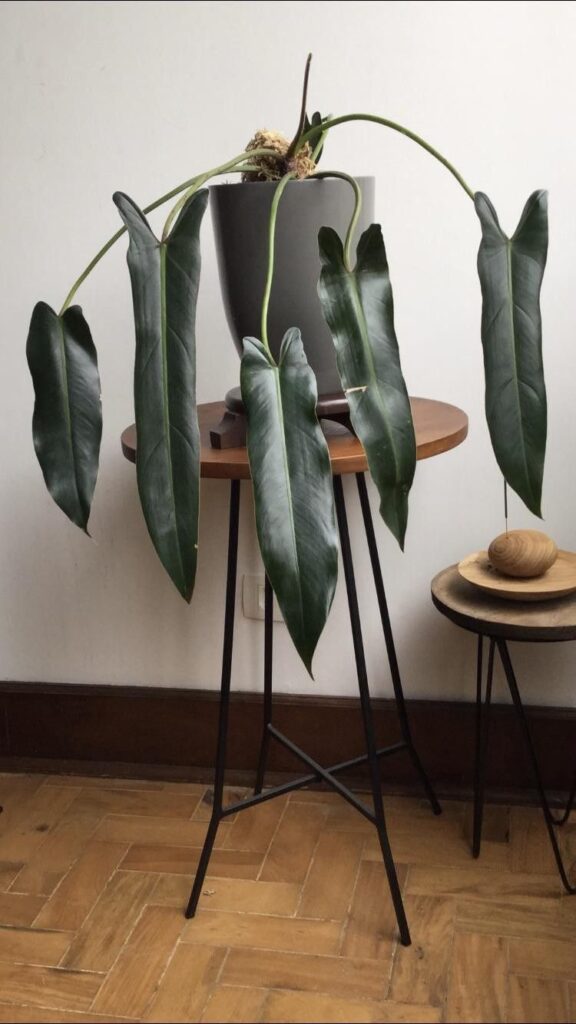
The rarest of the rare, the most exclusive philodendron of them all, the spiritus sancti is one plant that you would have to be divinely blessed for you to own a piece.
This plant is so scarce that it is almost exclusively bred by skilled gardeners dedicated to preserving endangered species. Plants available on the market may cost as much as $5000!
Not only is it affected by the danger to its natural habitat, but spiritus sancti itself also grows so sparsely that it is a miracle it was discovered in the first place. It can only be found in the Brazilian state of Spiritus Sanctus, which is where it derives its name. Even there, only six of them have been discovered growing in the wild.
At full maturity, Philodendron spiritus sancti is a stunning plant, well deserving of its sacred-sounding name. Pictures of this rare plant show its multiple stems shooting away from its roots in a perfect circle, with singular elongated leaves drooping down each stem in a serene display. Its dark green, leathery leaves can grow up to 2 feet long.
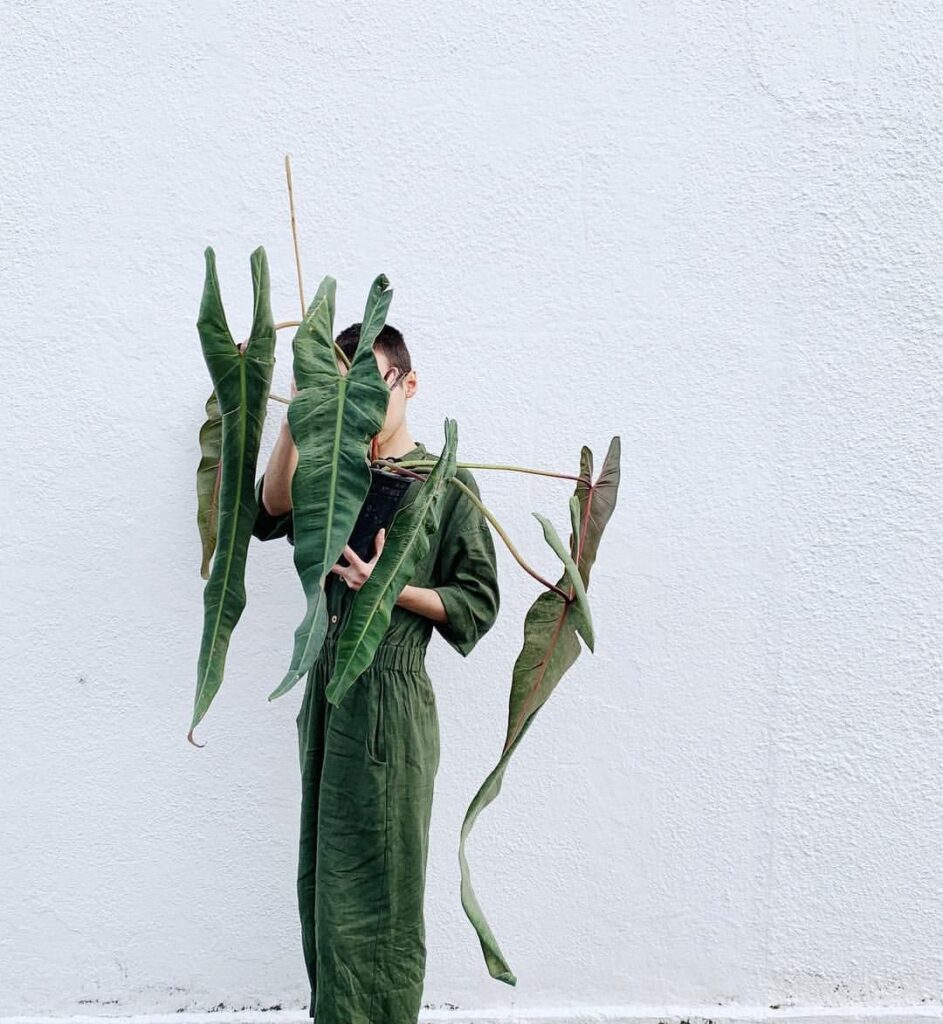
Spiritus sancti is an impressive climber that can reach up to 65 feet long in its natural habitat. Caring for this great plant involves ensuring that it gets the right amount of light and water, not too much or too little.
This plant does need much fertilizer to flourish. It can also tolerate slightly lower levels of humidity than other philodendrons. However, it doesn’t take to fluctuating environments well and prefers to be in a spot where the temperature stays the same all year round.
Keep it away from air conditioning units and drafty windows to avoid stunted growth and dry leaves.
Frequently Asked Questions
How Can I Make My Philodendron Full?
Leggy and sparse philodendrons are a major source of concern for many gardeners.
To fix this problem, try cutting back or trimming your plants’ vines. This will encourage more compact and leafy growth. Increasing humidity in the room where your philodendrons are placed will also help.
What Is The Rarest Philodendron?
The rarest philodendron species in the world is the Philodendron spiritus sancti.
It is named after the Brazilian state of Espirito Santo, the only place in the world where it has been discovered growing in the wild. Even there, it has been seen in only six instances. The spiritus sanctii looks as unique as it is rare, with leaves that may reach up to 2 feet long.
What Philodendrons Are Patented?
Some patented philodendron varieties include lemon-lime, red congo, and Brasil.
These plants are all hybrids, derived from Philodendron domesticum, Philodendron ‘imperial red’, and Philodendron scandens oxycardium respectively. Prince of congo, Emerald queen, and Winterbourn are other patented philodendrons.
Where Can I Buy Rare Philodendrons?
Some rare plants, like the pink princess philodendron, are more accessible than others. They can be found at local stores for a high price.
Rarer varieties can be bought more easily online than at physical stores. To buy the rarest varieties, you may have to contact a few collectors or specialized garden centers for more information.
Editor’s Recommendations
Philodendron Birkin: Its Most Informative Care, Propagation, and Watering Guide
Philodendron camposportoanum: The #1 Care, Watering, and Propagation Guide
Philodendron Erubescens: The Best Care, Propagation, and Watering Guide







